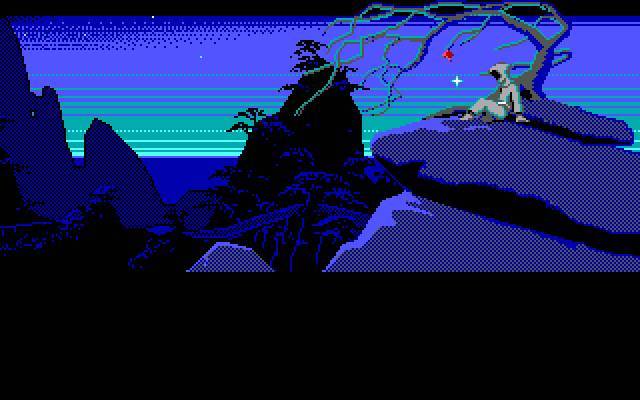Trending
Opinion: How will Project 2025 impact game developers?
The Heritage Foundation's manifesto for the possible next administration could do great harm to many, including large portions of the game development community.

Featured Blog | This community-written post highlights the best of what the game industry has to offer. Read more like it on the Game Developer Blogs or learn how to Submit Your Own Blog Post
More than twenty years after its release, Brian Moriarty's LOOM is still teaching us how to weave an elegantly simple game with depth and character.

More than twenty years after its release, I finally sat down to play LOOM, a classic LucasArts adventure game designed by Brian Moriarty. In many ways LOOM is completley unlike its peers from the early 90s, or any other adventure game I’ve played. I think there’s a lot that we can learn from LOOM about designing an adventure game in the modern age, and I wanted to articulate some of those thoughts here.

Scope
When LOOM was released, its main criticism was that it was too short. As someone who can often take months to complete an adventure game, I see the truth in that: I completed it in a little over three hours. Yet personally, I see LOOM’s length as positive.
When LOOM was released in 1990, there were far fewer video games to choose from—and at a typical price of $49.95 (in 1990 dollars), it was important that you get enough game for your money. But those facts have changed: there are now far more games than there is time to play them, and distributors like the App Store and Steam have driven prices down. Re-released on Steam in 2009, LOOM is now $5.99—a price that perfectly suits its length.
And the length itself would be ideal for an audience that has too many interesting games to play and not enough time to get to them all, provided that the game is still satisfying. And LOOM is definitely satisfying, for while it may be short, it has the scope of epic fantasy: a large cast of characters, rich mythology, and a world that simply feels big.
The richness of LOOM took me by surprise. The background art made the world seem vast, and listening in on conversations between characters gave me the sense that there was history to everything, a depth I was only beginning to understand. The game’s slow pace also added to this feeling. Cut scenes and player movements progressed deliberately, allowing me to take everything in, and the classical score imparted a sense of wonder.
Though LOOM did not take very long to play through, I still felt I had experienced an epic adventure.
An Interactive Story
Puzzles are not the emphasis of LOOM. Rather than have an inventory full of items and obscure ways to use them, you’re given one item: a staff which plays melodies, called “drafts.” To progress in LOOM you need to learn drafts and use them in creative ways. There are no dialogue trees, no items to use; just simple four-note melodies.
This does more than simplify the game: it gives a sense of character growth. As you near the end of the game, you will have learned more than ten drafts, and grown more powerful because of it.
As the puzzles simply involve choosing the correct draft to play, they are usually not extremely difficult. This contributes to the game’s short length, but also makes it feel more like an interactive story than an adventure game. You’re living through the narrative in real time, pausing only for short bursts before moving on to the next sweeping vista or scripted conversation.
More than an adventure game, LOOM is really an excellent example of interactive fiction. This makes it more linear than most games, but strengthens the storytelling.
Tone
Adventure games from the early 90s, and even today, tend to be zany and comical (with a few exceptions). LOOM instead is melancholy, serious, and occasionally graphic. This further deepens the game, while light touches of humor keep it from being dour.
Still Teaching
In the end, LOOM’s hallmark is really its simplicity. It has the most basic of interfaces, with no verbs or inventory. The length is short, choosing to focus on story over mind-bending puzzles. The pace is slow and deliberate, and sound effects and music are spare. The only complex part of the game is its deep mythological story.
Like its designer Brian Moriarty, now a professor of game design, LOOM is still teaching us. Its elements are ideal for the mobile era, and combine to create an adventure game that sucks the player in, transporting them to a rich world of possibility. LOOM’s simplicity also ignites the player’s imagination, creating a far larger world than the game designers ever could have.
Of course, the game does have its faults. But more than twenty years after its release, LOOM is still deeply affecting.
Read more about:
Featured BlogsYou May Also Like